- What Is Holistic SEO and Why Does It Matter in 2026?
- What Is Holistic SEO?
- Why Is Holistic SEO Important?
- Benefits of Holistic SEO:
- Holistic SEO Best Practices:
- 1. User Experience (UX):
- 2. Usability
- 3. Content Readability
- 4. Content Marketing
- 5. Technical SEO
- 6. On-Page Optimization
- 7. Off-page SEO
- 8. SEO Beyond Google
- Conclusion
- Author Bio:
What Is Holistic SEO and Why Does It Matter in 2026?
Holistic SEO is a modern approach to search engine optimization that looks at your entire digital ecosystem — not just keywords or backlinks. In 2026, it’s more relevant than ever because Google and AI systems evaluate how all parts of your site work together to deliver value to the user.
SEO is always changing.
Search engines like Google keep tweaking their algorithms. And the way we all search for stuff keeps evolving.
We’re not in the driver’s seat for either of those.
And just to keep things interesting, AI has now entered the chat, threatening to flip the whole board over.
It’s enough to make you want to throw your hands up and ask, “Why even bother with SEO anymore?
Hold up.
If you’re not showing up on Google, you’re invisible to people who are actively looking to buy exactly what you’re selling. You can’t just ignore it.
With approximately 16.4 billion searches on Google every day, it’s clear how massive the search landscape truly is.
That’s where this whole holistic SEO thing comes in. This isn’t about chasing that #1 ranking anymore. It’s about creating a website that users love and that search engines trust.
In this guide, I’ll walk you through holistic SEO, helping you attract more organic traffic, improve user experience, and future-proof your website.
Let’s get started…
What Is Holistic SEO?
Holistic SEO is the practice of optimizing every aspect of your website to provide an exceptional experience to your users. It includes technical SEO, user experience, on-page SEO, content quality, off-page SEO, and brand reputation.
This is different from traditional SEO, which is optimizing your website for search engines only.
Holistic SEO is user-centric.
Here’s a video from Yoast.
Why Is Holistic SEO Important?
Holistic SEO is important because it’s a user-centric approach.
Traditional SEO solely focuses on ranking a web page for a target keyword.
On the other hand, Holistic SEO is focused on ranking a page and giving the users the best experience.
Traditional SEO is more focused on search engines rather than users.
Google wants to provide the best content and experience to its users. So they keep improving their search all the time. In fact, in 2022, Google made 4,725 changes to its ranking systems and user interface.
It’s next to impossible to track everything they do
What you can do is provide a great experience to users.
That’s what holistic SEO is all about.
Google rewards sites with a good page experience.
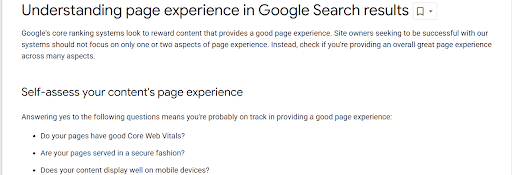
According to an SEO Labs study, nearly 90% of online users will not return to a website after a bad experience.
So, it’s clear you need a user-first approach.
In March 2024, Google rolled out the March Core Update to tackle low-quality content. This update caused many websites to lose traffic, as they’d been using AI tools to generate content.
Google hates low-quality content, and it doesn’t matter if AI or humans created that.
Here you can see what Google says:
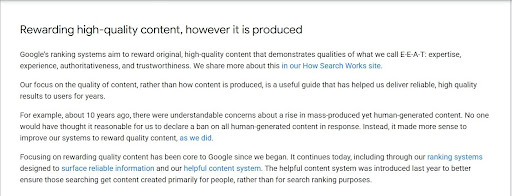
There’s a saying among SEOs and marketers. It goes like this: “Humans have credit cards, search engines don’t.”
So your SEO strategy should be human-focused, not search engine-focused.
Google’s algorithms are super smart now. If you try to game them, they can smell it. They can even penalize your website. And it can take a long time to recover from a penalty.
You’d better avoid trying any shortcuts or black-hat SEO tactics.
SEO is one of the best marketing channels and can be lucrative for your business. You just need a holistic SEO approach instead of focusing on traditional SEO practices.
Benefits of Holistic SEO:
Holistic SEO focuses on providing a great user experience to your users.
Let’s talk about the more specific benefits of having a holistic SEO approach.
#1 More Organic Traffic: Holistic SEO helps you attract more organic traffic to your websites. You’ll be ranking higher in SERPs for relevant keywords your target audience is searching for.
#2 Improved User Experience: A holistic SEO approach optimizes your website to be fast-loading, mobile-friendly, and easy to navigate. By prioritizing intuitive design, relevant content, and seamless performance across devices, you create a positive, engaging experience that keeps users coming back to your website. By doing all these, your users will get a better experience.
#3 Future-proof Your Website: You’re less likely to get penalized by algorithm changes. Because you have a user-centric approach. SEO is evolving. AI Overview and AI Mode are examples. You can’t do anything about it. What you can do is adapt and give your users the best experience. However, there’s no guarantee that you won’t get hit by any future Google algorithm.
#4 Boosts Your Website Authority: By consistently delivering valuable, well-researched content, your website builds trust with users and search engines. This establishes your site as a credible authority in your niche, leading to higher engagement, backlinks from reputable sources, and improved search rankings.
#5 More Conversions: Holistic SEO attracts a targeted audience by aligning content with their search intent. By providing valuable, high-quality content and a seamless user experience, your website encourages visitors to take action, resulting in higher conversion rates.
Holistic SEO Best Practices:
Here are the holistic SEO best practices you need to succeed.
1. User Experience (UX):
Holistic SEO isn’t just about keywords and backlinks. It’s about giving your target audience a great experience.
Think of it this way: Google acts like a sophisticated visitor to your website, constantly observing and understanding how actual users interact with your content and design.
Because Google prioritizes user satisfaction, focusing your efforts on improving your website’s User Experience (UX) is crucial for your SEO success.
Here are some tips to improve your website’s UX.
Visual Appeal
If your website is still sporting an outdated look, you’re likely hindering your SEO efforts. The truth is that older website designs often lack the user-friendliness that today’s visitors expect and Google rewards.
To succeed, you need a design that’s not just visually appealing but also intuitively easy to navigate.
A clean, modern design with clear calls to action significantly boosts user satisfaction and encourages visitors to spend more time on your site.
Plus, adding images, videos, infographics, and GIFs makes content more engaging and easier to digest.
You can see an example of a good website design below.

It’s a cookie brand – Sweet Addisons.
If website design is not your cup of tea, you can hire an agency or a freelance website designer on Upwork.
Responsiveness
According to Statista, 58.67% of traffic comes from mobile devices.
You can check your Google Analytics; most of your visitors are using mobile devices. If your website is not mobile-responsive, it may frustrate your users.
Most new themes offer responsive design. You should check before installing any theme.
Plus, you need to write text that is easier to read. Don’t let your text become a giant wall. If your users struggle to read your website, they’ll just bounce back.
You should use short paragraphs—just 2-3 sentences max.
Intuitive Navigation
How easy is it for users to find what they’re looking for? Clear menus, logical categorization, and a well-thought-out information architecture are vital.
2. Usability
It simply means how easy and efficient your website is for people to use and interact with.
Some crucial points to keep in mind:
Clear Calls to Action (CTAs)
What action do you want your users to take? You should use a clear CTA (e.g., Buy Now, Add To Cart, Book A Call, Contact Us, etc.)
Minimized Friction
Make sure your website loads fast, is easy to navigate, and doesn’t have annoying pop-ups so users have a smooth and engaging experience.
Breadcrumbs
Breadcrumbs are secondary navigational links (e.g., Home > Category > Subcategory > Current Page) typically found at the top of a webpage. They show a user’s location within your site’s hierarchy.
Accessibility
Making your website easy for everyone to use, especially people with disabilities, is good for your visitors and helps your site show up better in search results.
This includes things like:
- Alt text for images.
- Proper color contrast.
- Keyboard navigation.
- Captions and transcripts for multimedia.
You can find more on this here: WebAIM’s WCAG 2 checklist.
Here you can see an example of the Ahrefs website homepage.
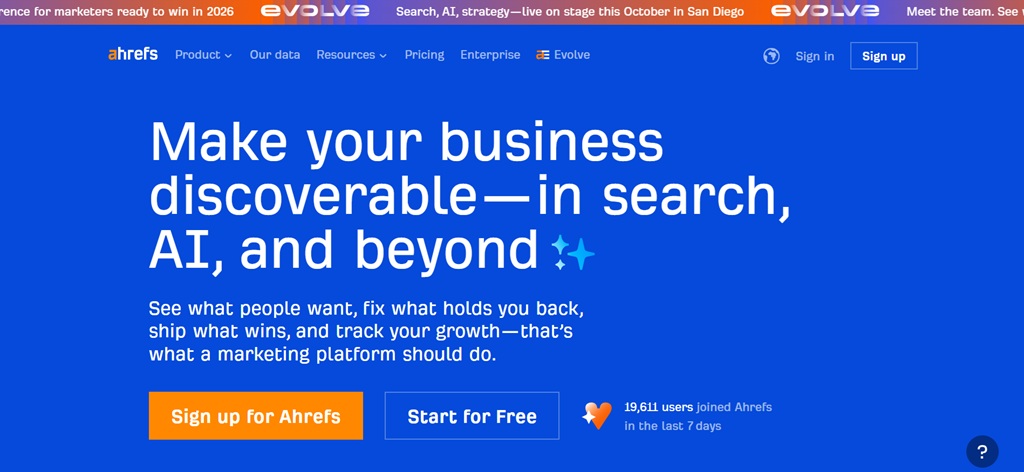
3. Content Readability

When it comes to reading online, most people tend to skim rather than read every word.
Nobody wants to read a long wall of text. It’s hard to read, especially on mobile devices.
These days, people use their mobile devices a lot. Chances are you’re reading this post on your mobile device.
And it’s hard to read a wall of text on mobile devices.
You need to make sure your content is easy to scan and read.
Some tips to improve content readability:
Use Short Sentences
Longer sentences are hard to read and digest. And sometimes they can confuse your readers.
Most of the time, you can convert a long sentence to a short and easy-to-digest sentence.
Here you can see an example:
Long: While crafting marketing copy, it’s important to consider your target audience’s reading habits and attention span, ensuring your message is clear, concise, and impactful.
Short: Short sentences grab attention and deliver your message with a punch.
Short sentences create a sense of momentum, keeping readers hooked and wanting more.
With that said, long sentences can add depth, emotional connection, and emphasis to your copywriting. You can use long sentences when they make sense and make your content clear and impactful.
Let Your Content Breathe
Make sure you leave space for your content to breathe. Proper use of whitespace improves readability and makes the page less overwhelming.
This means your content should have white spaces between letters, words, sentences, and paragraphs.
Having fewer white sentences can make your content overwhelming. On the other hand, having too much white space can make your content feel disconnected.
You need to have a good balance.
Don’t Use Jargon
Keep in mind that you’re not writing content for scientists. You’re writing content for everyday folks.
They may not understand the technical jargon.
Use simple language and easy-to-understand words.
If you’re writing Cloud Computing, you should explain it like this: Storing and accessing data or programs over the internet instead of on your own computer or server.
Make sure your website clearly explains everything. So users don’t have to leave and search on Google for definitions of technical terms.
Keep it simple.
Use Active Voice
Active voice is easy to understand. And it makes your writing crystal clear.
Don’t use passive voice unless it’s necessary.
You can use AI tools to convert passive voice to active voice.
Pro Tip: Use a readability checker tool. I use Hemingway Editor.
4. Content Marketing

Optimizing your website for SEO is not enough to attract traffic from Google search engines like Google.
You need to have a solid content marketing strategy.
Create Valuable and Unique Content
Throwing a lot of content on the web but not getting results.
You’re not alone.
People are creating a lot of content without adding value. Anyone can create a blog post in seconds with AI tools like ChatGPT.
Guess what, most of them are getting little to no traffic from Google.
Because those contents don’t have any value.
Those are regurgitated pieces of information that are already available on the web.
And we don’t need more blog posts. We need blog posts that provide some sorts of value.
What’s the solution?
You need to focus on creating unique and valuable content that resonates with your audience.
AI tools are not that good at writing valuable blog posts. Plus, these tools miss the human touch.
People are craving for the human touch, not the AI touch.
I’m not saying that you should totally avoid AI tools in the content creation process. But don’t rely on any tool to write content for you.
Here’s what Google says about AI writing content.

And these tools are not that good at creating people-first content and demonstrating E-E-A-T.
Still, you need a human in the loop to edit the content and add the human touch. Your content needs to be better than what is already ranking on the SERP.
Your goal should be to create helpful content that solves your audience’s problems.
Here are some tips to create great content:
- Know What You’re Writing: If you are writing about baking cakes, you must have experience baking cakes. This way, you can crush most of your competitors. Most people create content after reading a few articles. You need to avoid that if you want to stand out.
- Be Unique: Talk about something that others are not talking about. Google your target keyword and analyze the top 10 posts. Understand the search intent and satisfy it with your content. You can add relevant questions and answer them. You can find questions and keywords on Quora, Reddit, AnswerThePublic, and AnswerSocrates.
While it’s not always possible to have experience in every topic, you can interview subject matter experts in such cases. Freelance writers often take this approach.
Promote Your Content
Creating great content is 20% of the work. The rest 80% is to promote it to the right audience.
Here are some proven blog promotion strategies:
- Share Your Post on Social Media: Which social media platform? Go where your audience is hanging out. I’d recommend sharing your posts on LinkedIn and X. Even a single tweet/retweet can get you a lot of eyeballs.
- Do Blog Outreach: Find bloggers/influencers in your niche and ask them to share your content. You can find their emails using tools like Hunter or Snov. Write an email and ask to share your content. Don’t use any template. Before sending emails, you can share their content and comment on their posts. Most people will ignore your emails. And that’s okay. A few of them might respond and share your content.
5. Technical SEO
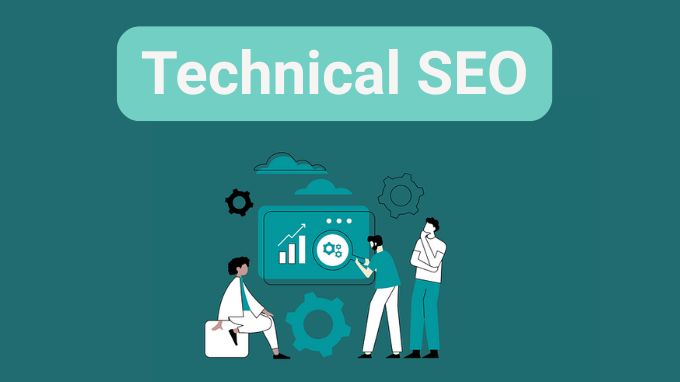
You can have great content, but if search engines can’t find it or understand it, it won’t rank well.
That’s why many SEO experts call Technical SEO the backbone of SEO.
You can use website crawler tools like Screaming Frog to audit your website’s technical SEO.
Some important elements of technical SEO:
Crawlability
- Sitemap: An XML sitemap is a file that lists all the pages on your website. It helps search engines find your pages. WordPress users can use SEO plugins like Yoast or Rank Math to create a sitemap in just a few clicks. Once you’ve created a sitemap, submit your sitemap to Google Search Console to help Google find your content.
- Robots.txt: This file tells search engines which pages on your site they can crawl and index. Here’s Google’s official guide to creating a robots.txt file. To check your website’s Robots.txt file: Type “https://yourwebsiteurl.com/robots.txt” and hit enter.
Indexation
- Submit Your Site to Google Search Console (GSC): It’s a great tool by Google to help you improve your SEO. Log in to your Google Search Console and submit your website. You can monitor indexing issues and your website’s performance.
- Canonical Tags: A canonical tag is an HTML link element that helps search engines understand the “preferred” or original version of a web page when multiple versions of a page exist. It helps you avoid duplicate content. If you’re using an SEO plugin, it’s pretty simple to add a canonical tag.
Site Speed
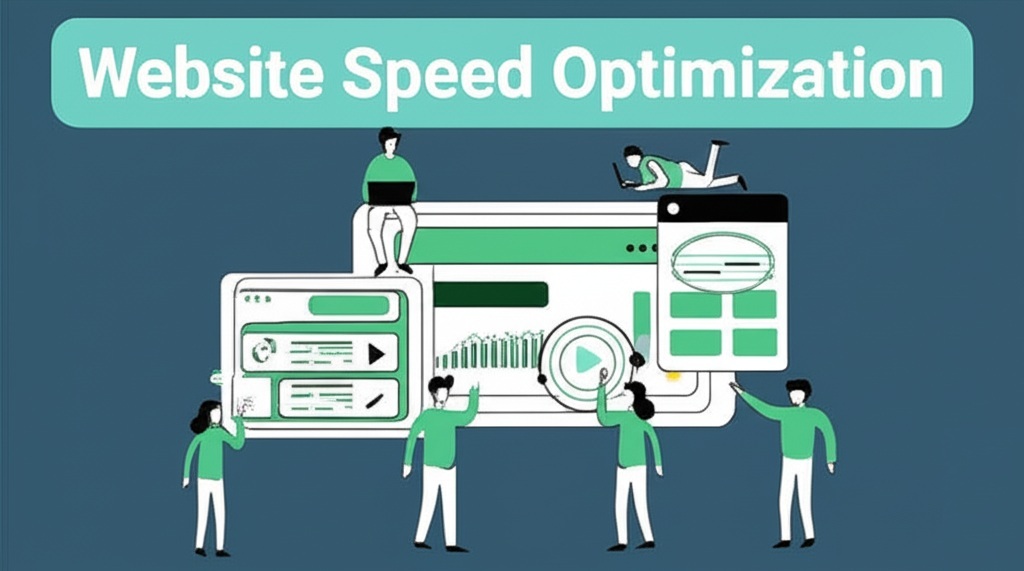
Nobody likes a slow-loading website. If your website takes too long to load, your visitors will simply leave.
And you don’t want that, right?
Need another good reason to optimize your site speed?
Page speed is a confirmed ranking factor.
You need to make sure your website loads super fast.
Here’s how you can improve your website’s load time:
- Use High-Quality Web Hosting: A website is an asset. You should invest money in it. Don’t use cheap web hosting. Think of it as an investment. Go for a high-quality hosting like WPX, Cloudways, Rocket, or Kinsta.
- Compress Images: Using images and screenshots is necessary to make your post visually appealing. However, high-quality images can make your web pages slower to load. So, compress your images using tools like TinyPNG or Kraken.
- Use a CDN (Content Delivery Network): Using a CDN can boost your website’s load time. By leveraging a CDN (Content Delivery Network), your website will automatically utilize a server located geographically close to your visitors, resulting in faster loading times and an improved user experience. Cloudflare is one of the most popular CDNs.
- Use a Caching Plugin: Using a caching plugin can boost your website’s load time. By leveraging a caching plugin, your website will automatically save static copies of your pages and files, resulting in faster loading times and an improved user experience. You can use WP Rocket (Paid) or W3 Total Cache (Free).
Check Broken Links
Broken links, also known as dead links, are hyperlinks that point to a page or resource that no longer exists or is unavailable.
When a user or search engine crawler tries to access a broken link, they typically encounter a “404 Not Found” error.
Broken links can hurt your overall SEO.
You can use a broken link checker tool to find broken links on your website.
Here are some tools that you can use:
- Dr. Link Checker
- Screaming Frog
- Semrush
- Ahrefs
Dr. Link Checker is simple to use.
Head over to the Dr. Link Checker and enter your website. It will show you the broken links on your website.
Once you’ve found the broken links, fix all of them.
6. On-Page Optimization
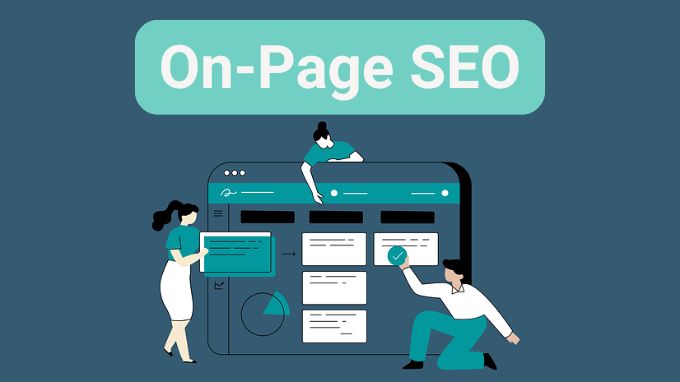
On-page elements are the primary signals search engines use to understand what your page is about. By optimizing your posts and pages for search engines, you make it easier for them to understand your content and rank it for relevant queries.
Below, I’m going to share some on-page SEO best practices.
Optimize The Title Tag

Most people don’t spend much time writing the title.
That’s a huge mistake.
A title tag is a super important element of an SEO-optimized blog post.
Why?
It tells both Google and the users what your page is about.
Plus, it’s the first thing people notice in your content. Based on the title tag, they will decide if they will click on your page or not.
You need to make your title click-worthy. And you need to optimize your title tag for SEO by including your target keyword.
Some SEO-optimized title tag examples:
- SEO Basics: Your Guide to Ranking #1 on Google
- Digital Marketing for Small Business: A Complete Guide
- What Is PPC? A Beginner’s Guide to Pay-Per-Click Marketing
- Brand Building Strategies: Create a Memorable & Profitable Brand
Internal Linking
Internal links help search engines understand the structure of your site and find new content.
Make sure your website has a strategic internal linking approach.
Here are two tips to make your improve your internal linking strategy:
- Use Descriptive Anchor Texts: Google recommends using descriptive anchor texts. Instead of using “check out this article”, use“read our in-depth analysis of emerging AI trends in content creation.”
- Use Dofollow Links: Make sure your internal links are dofollow. Otherwise, it will not pass the authority.
Write SEO-Friendly URLs
URL structure isn’t a primary ranking factor. It’s an important element of a well-optimized blog post.
A good URL creates a positive user experience for your users and helps search engines crawl your pages efficiently.
John Mueller, Search Advocate at Google, recommends “choosing URLs for users, not search engines.”
Some best practices for writing SEO-friendly URLs:
- Write Short URLs: According to a Backlinko study, Pages with short URLs rank higher than long URLs. Cut the unnecessary words and make your URLs shorter.
- Include the Target Keyword in Your URL: It will help both search engines and users understand what your page is about.
- Use Hyphens (-) to Separate Words: Google recommends using hyphens to separate words. Avoid using underscores.
- Use Lowercase Letters: URLs are case-sensitive on some servers. Always use lowercase in your URLs.
- Avoid Dates: Unless the date is highly relevant to the content (e.g., a news article), avoid including dates in URLs, as it can make your content seem outdated.
- Implement 301 Redirects: If you change a URL, always set up a 301 redirect from the old URL to the new one. This way, you can avoid having broken links.
Here’s an example of a good URL structure.
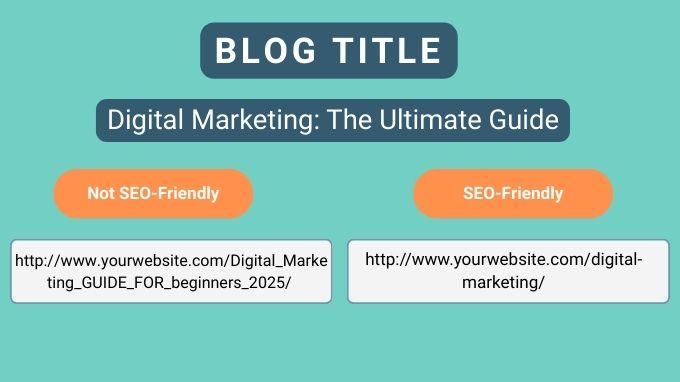
Meta Description
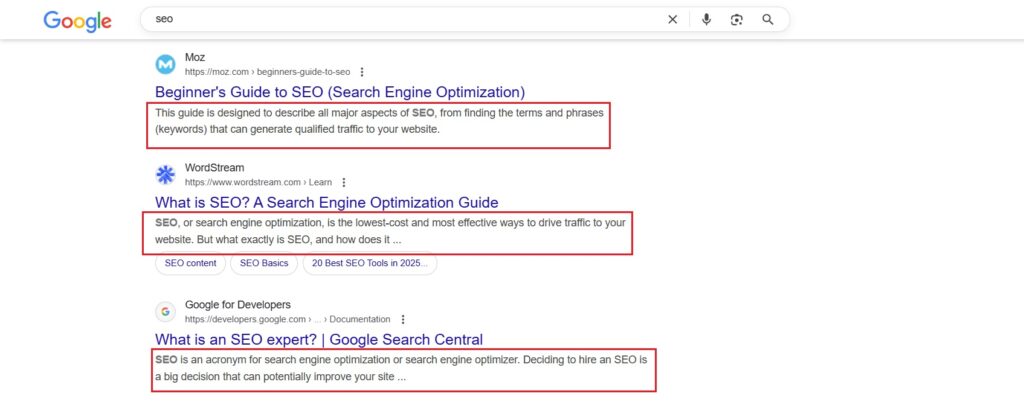
A meta description is an HTML tag that provides a summary of your web page. It’s a second chance to convince people to click on your website.
Meta descriptions are not a direct ranking factor. But it can help you increase your CTR (click-through rate).
Tips for writing a killer meta description:
- Make it Unique: Write a unique meta description for each web page. You can run SEO audits through tools like Semrush to find duplicate meta descriptions.
- Use Keyword: Include a relevant keyword in each meta description. Don’t force it. Try adding naturally.
- Make it Relevant: An irrelevant meta description can increase your bounce rate. It should be relevant to the web page.
- Craft a Compelling Description: Focus on benefits, not just features. What problem does your page solve? What value does it offer the user? Use strong, active verbs.
Here’s an example of a good meta description:
“Struggling with a leaky faucet in Denver? Our certified emergency plumbers provide rapid, reliable solutions 24/7. Don’t wait, call now!”
7. Off-page SEO
Off-page SEO is crucial for a well-rounded, holistic SEO strategy.
You need to focus on off-page SEO to increase your search engine visibility.
Off-page SEO is the efforts made outside of your own website to improve its search engine rankings.
Link Building
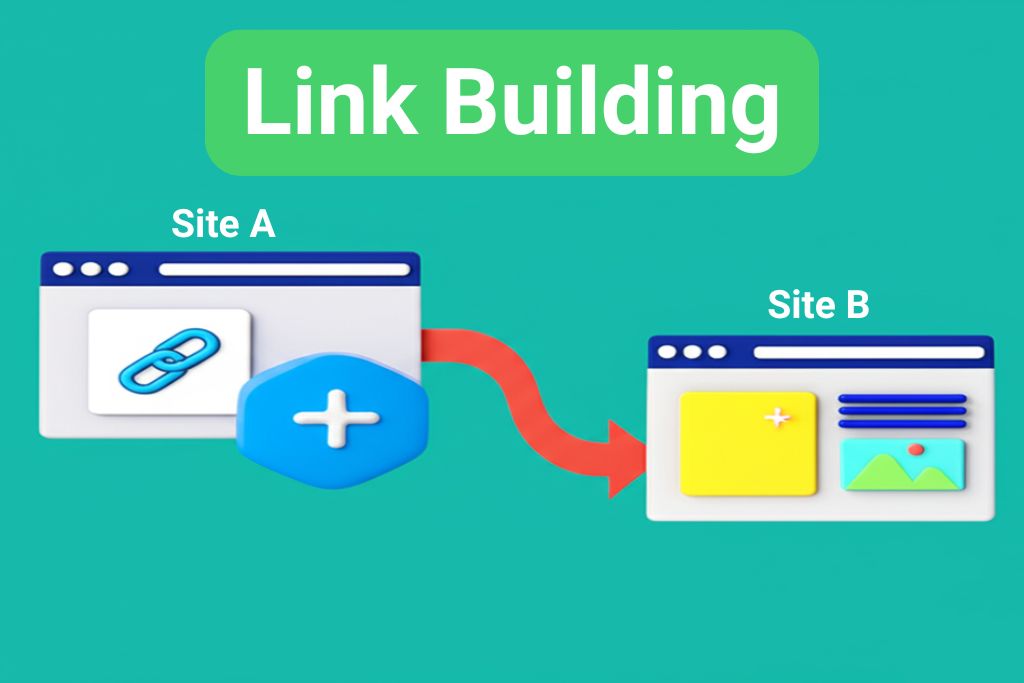
Backlinks are super important to rank your website higher on Google.
Google’s algorithms are evolving, and with the focus on quality and relevance, backlinks continue to be a powerful signal of authority, trustworthiness, and credibility.
4 Proven ways to build links:
Let’s see…
1. Blog Outreach
The method doesn’t work as much as it used to. But it still works.
Google your target keyword, and you’ll see websites that are ranking on the first page.
Now, take the website and put it in any backlink analysis tool like Semrush or Ahrefs. And it will show you the list of backlinks pointing to the page.
Craft an email pitch and send it to the editor or blog owner. If your blog post is good enough, chances are a few of them will link out to you. You need to send a lot of pitches.
2. Broken Link Building
It’s an effective link-building tactic. You need to find broken links on relevant websites and replace them with your web page.
Here’s how you can do it:
- Find some target websites. Make sure they are relevant to your niche.
- Now, head over to Semrush or Ahrefs.
- Enter a website URL. Now, look for the broken link section and click on it.
- It will show you the broken links.
- Now, look for some relevant links that you can replace with your web page.
- Then, craft an email to them notifying them that they have a broken link on their website.
- Nobody wants broken links on their website. They will link out to you with a happy face.
3. Utilize Unlinked Brand Mentions
Some websites might mention your brand name but not link to your website. It’s a good opportunity to get backlinks.
You can use Google search operators to find unlinked brand mentions.
Here’s how:
Head over to Google, type “intext: your brand – yourwebsite.com” and hit enter.
Google will show you the websites that have mentioned your brand but haven’t linked out to you. Reach out to them and ask them to link to your website.
Ahrefs has an awesome guide on how to build links with brand mentions.
4. Create Linkable Assets
A linkable asset is any high-quality, valuable, and compelling piece of content or resource on your website that is designed to attract backlinks.
You can create data-driven posts and super-detailed guides.
If you’ve the resources, you can build a tool and give it away for free. It can attract a lot of links to your website.
Neil Patel has a tool called Ubersuggest. Below, you can see it attracted 214K links to the URL.
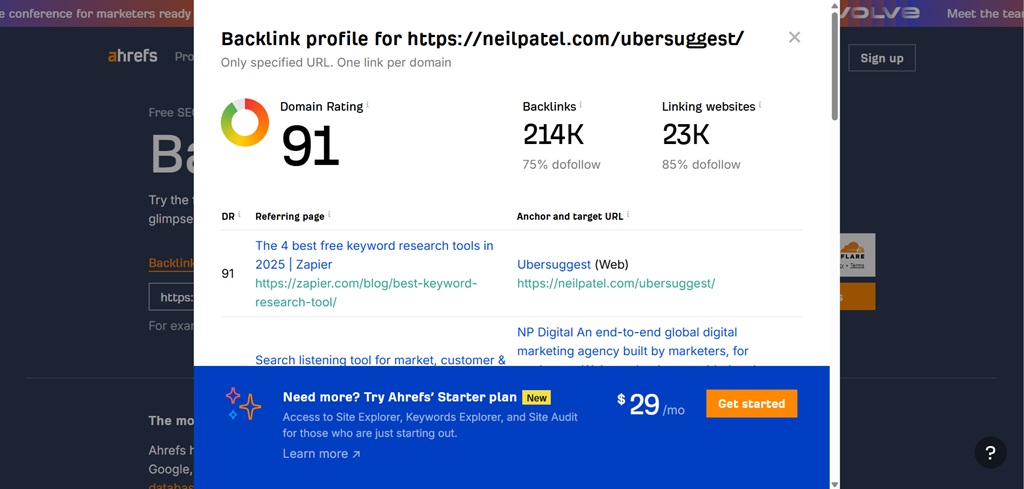
5. Digital PR

Digital PR is the practice of getting online coverage for your brand. Think of it as traditional PR, but here you can measure results.
Digital PR is about building relationships with bloggers, journalists, and influencers.
It can help you get brand mentions and link-building. Both are great for SEO.
Want to create a digital PR campaign for your brand? Here’s a guide on how to create a digital PR campaign.
Two super detailed link-building guides for you.
Brand Mentions

Brand mentions are fundamental building blocks for establishing and reinforcing your brand’s authority, trustworthiness, and relevance in the eyes of search engines.
When other people mention your brand on their sites, Google and other search engines interpret it as a signal that others are talking positively about your brand.
As a result, your website might rank higher on Google.
You can get brand mentions by creating high-quality content that is valuable and referenceable to your audience. Then, promote your brand through digital PR, influencer outreach, and community engagement.
Social Media Engagement
Social media engagement is not a direct off-page SEO factor. But it can impact your ranking.
Sharing your content piece on social media can give you a wider reach. It increases the chances of others finding your content valuable and linking to it on their own websites.
Make sure you share your content on social media platforms.
8. SEO Beyond Google
When you say “search engine optimization, people tend to think of optimizing for Google.
And it makes sense. Google is a leading search engine with a whopping market share of 89.62%. Google is projected to handle 13.7 billion searches per day.
That’s a huge number. So when it comes to SEO, Google should be your priority. Period.
But with the rise of powerful AI tools like ChatGPT and Gemini, the way people search for information is evolving. These LLMs (Large Language Models) are changing the traditional search landscape, as more and more people are turning to them to find what they need.
A Semrush study found that an LLM visitor is worth 4.4x more valuable than a traditional search visitor. So you can’t ignore it.
Below, I’m going to share how you can improve your brand’s AI search visibility on these LLM platforms.
Generative Engine Optimization/AI Search Visibility
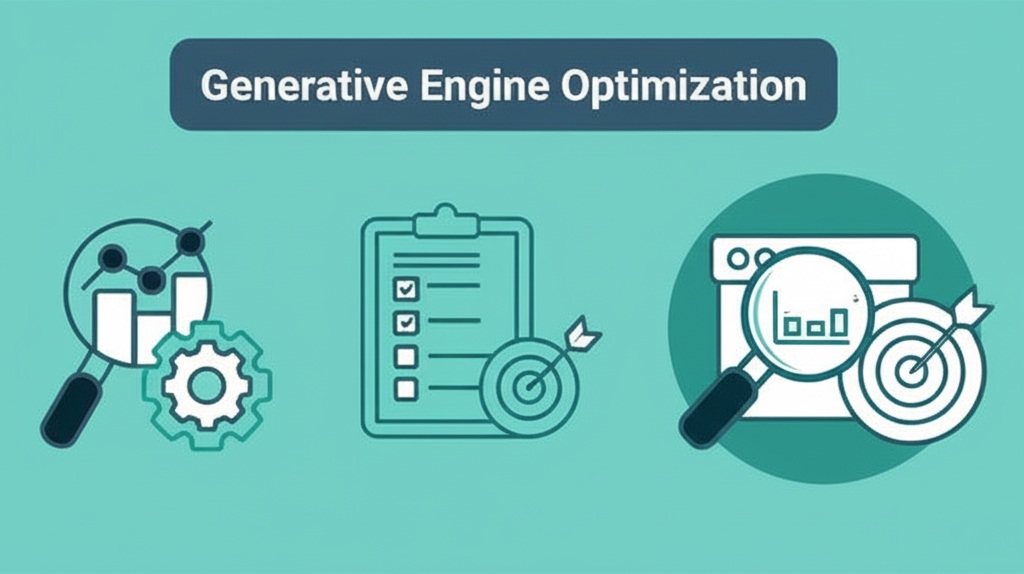
Generative Engine Optimization (GEO) is the process of optimizing your website for generative AI models. Unlike SEO, which primarily targets keyword-based rankings on search engines, GEO aims to have a brand’s information, products, or services directly integrated into the answers generated by AI.
There are multiple generative AI platforms such as ChatGPT, Gemini, Claude, Perplexity, Grok, Mistral, and Deepseek.
Optimizing your brand for these platforms allows you to appear in search results when others are looking for products or services like yours.
I searched for “roofing contractors in Denver” on ChatGPT. You can see the result.
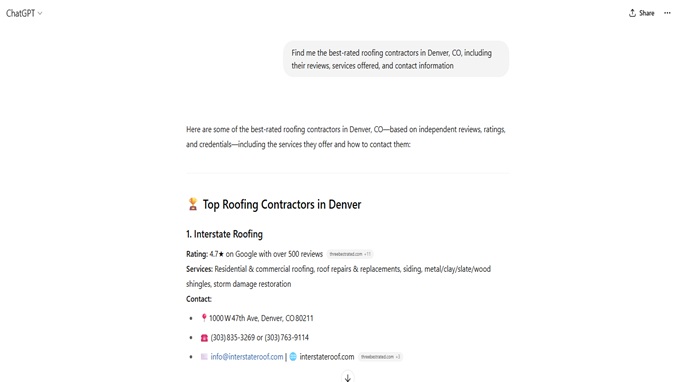
4 Tips Show Up On These Generative AI Platforms
- Build A Solid SEO Foundation: These generative AI platforms often take information from top-ranking pages. If you can rank your website on Google, your brand might show up on these platforms. The holistic SEO strategies I’ve shared will help you build a solid SEO foundation.
- Target Long Tail and Question-Based Keywords: People are using longer tail keywords. AI models often favor detailed, specific answers. Optimize for long-tail keywords and questions that users might ask generative AI tools. Use tools like Semrush, Ahrefs, “People Also Ask” sections, AnswerThePublic, Reddit, and Quora to identify common questions.
Examples:
Long-Tail: “best practices for structuring content for Google’s AI Overviews”
Question-Based: “How can understanding user intent improve SEO performance for AI-powered search results?”
- Get Brand Mentions: Generative AI models are trained on vast datasets and are designed to prioritize information from credible, authoritative, and trustworthy sources. Try to get brand mentions from authoritative and reputable sources. These high-quality signals bolster your site’s credibility. You can run digital PR campaigns to get brand mentions.
- Use Conversational Language: When writing content on your website, use conversational/natural language. Write like you’re talking to your friend.
Conclusion
This is my complete guide on holistic SEO.
By adopting a holistic approach, you’re not just chasing rankings – you’re building a brand that lasts.
Stop thinking like an SEO and start thinking like your customer. True online success in today’s world isn’t about tricking an algorithm. It’s about building a great experience at every touchpoint.
Remember, it’s all about giving your users the best experience you can.
Author Bio:
Subhrajyoti Mahato is a content marketing strategist. He helps businesses achieve their marketing goals through content marketing.
You can connect with him on LinkedIn and X (Twitter).







0 Comments